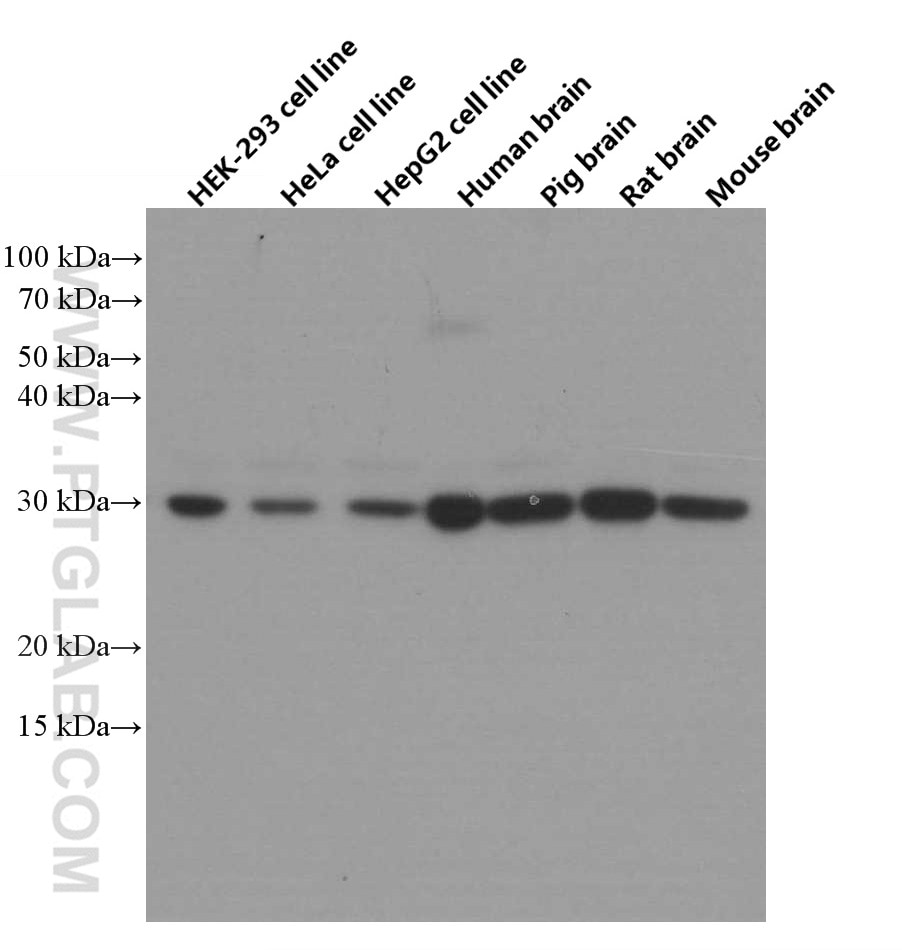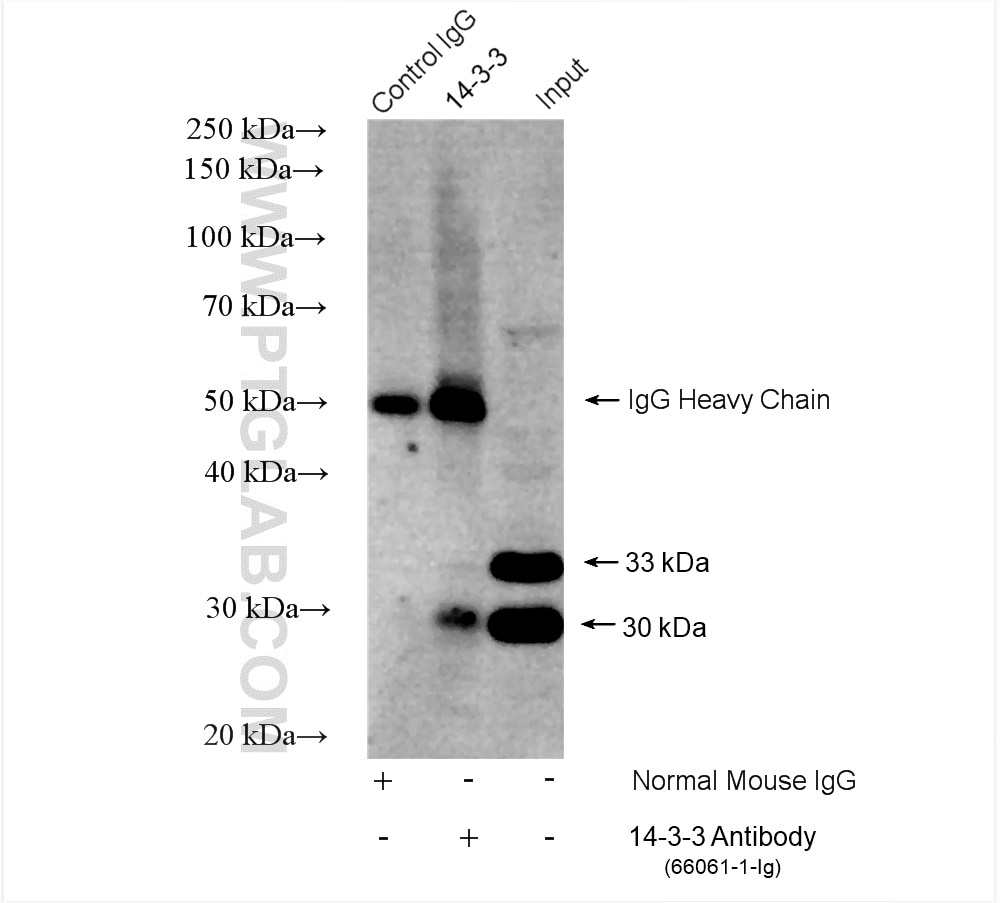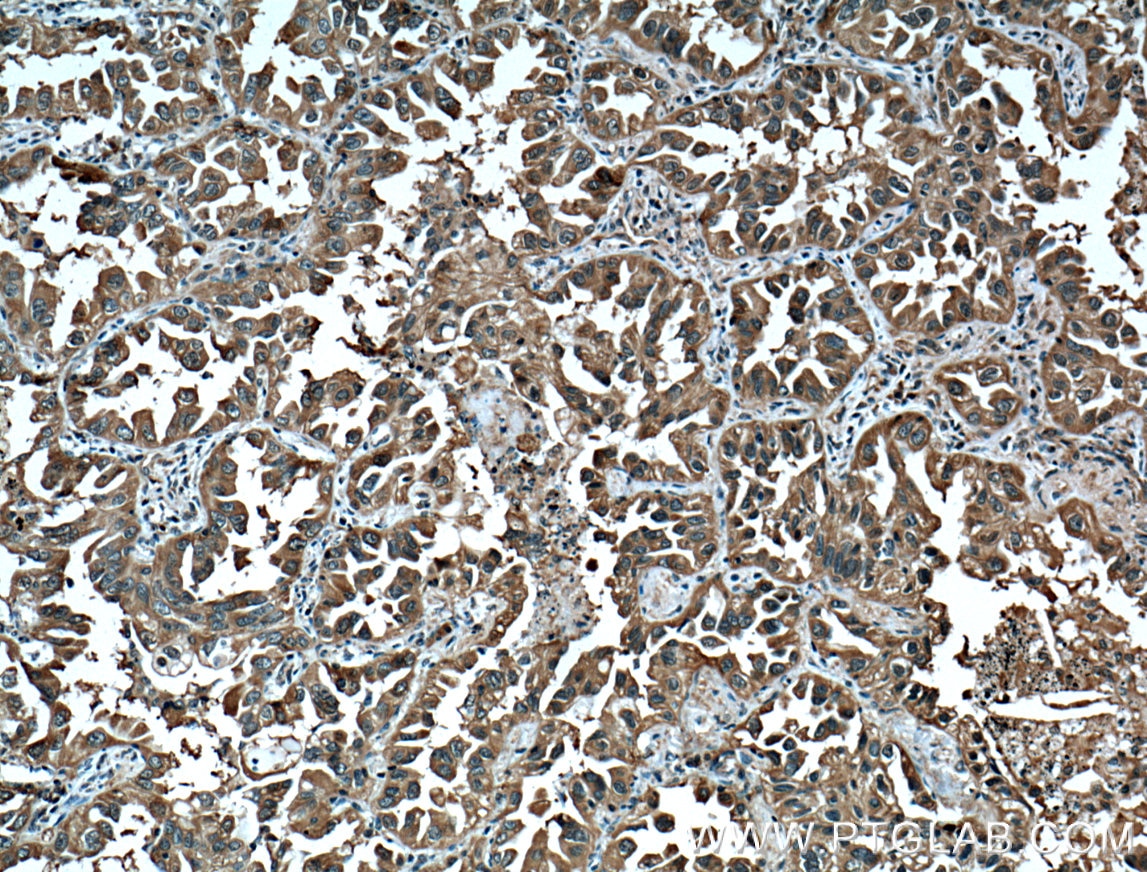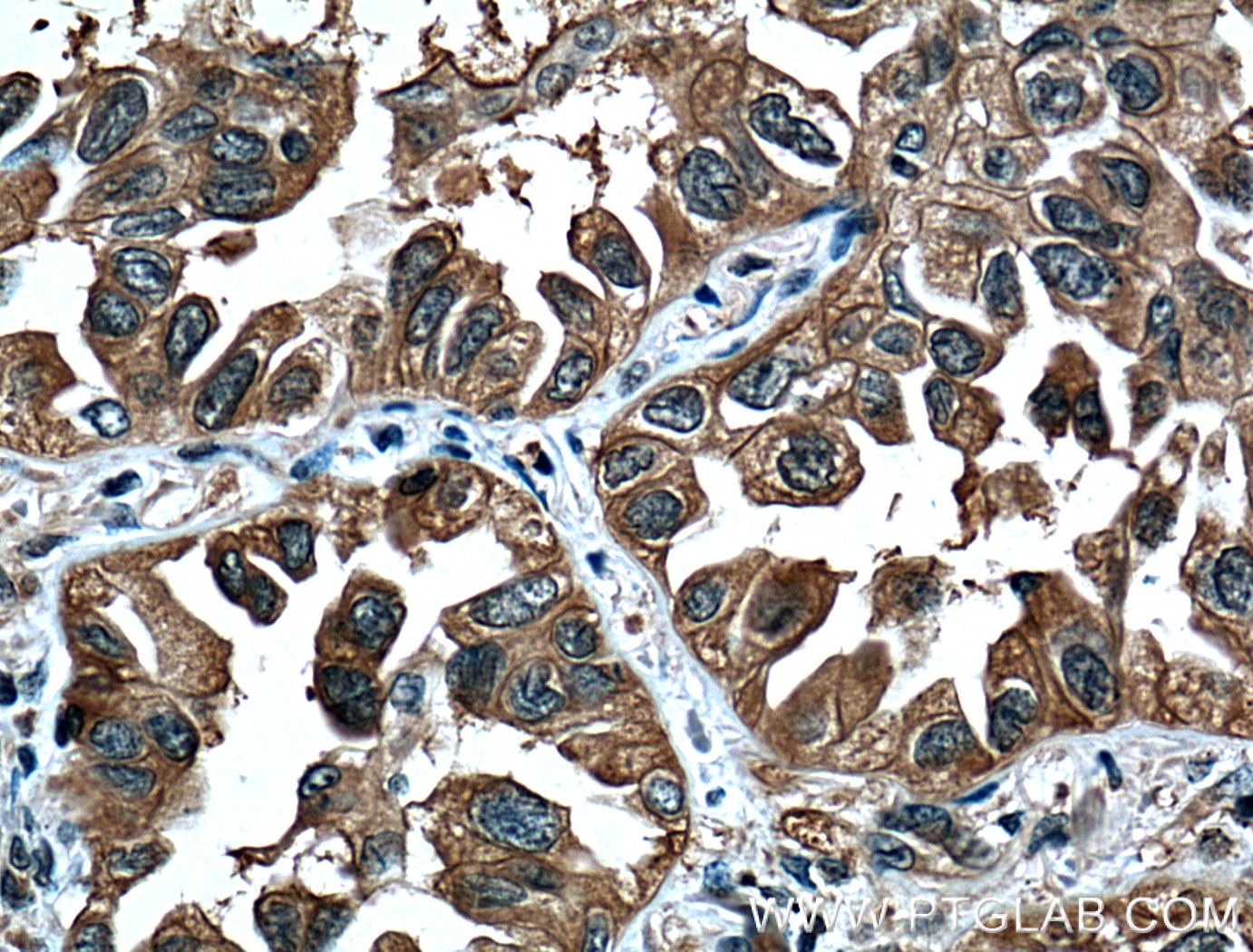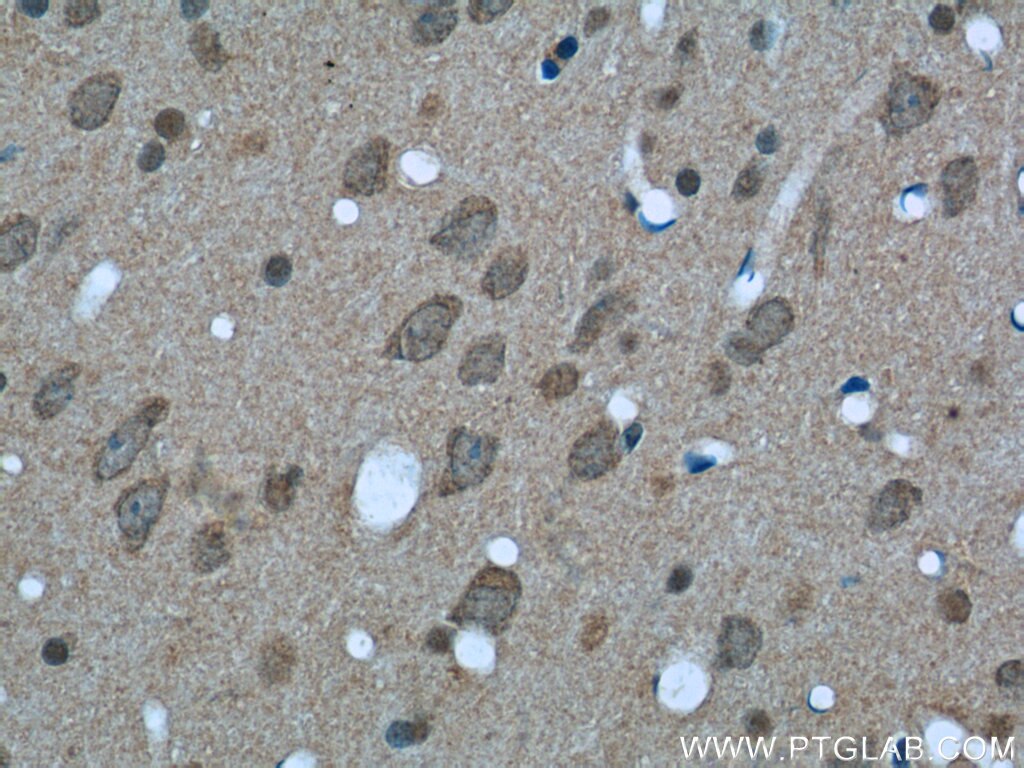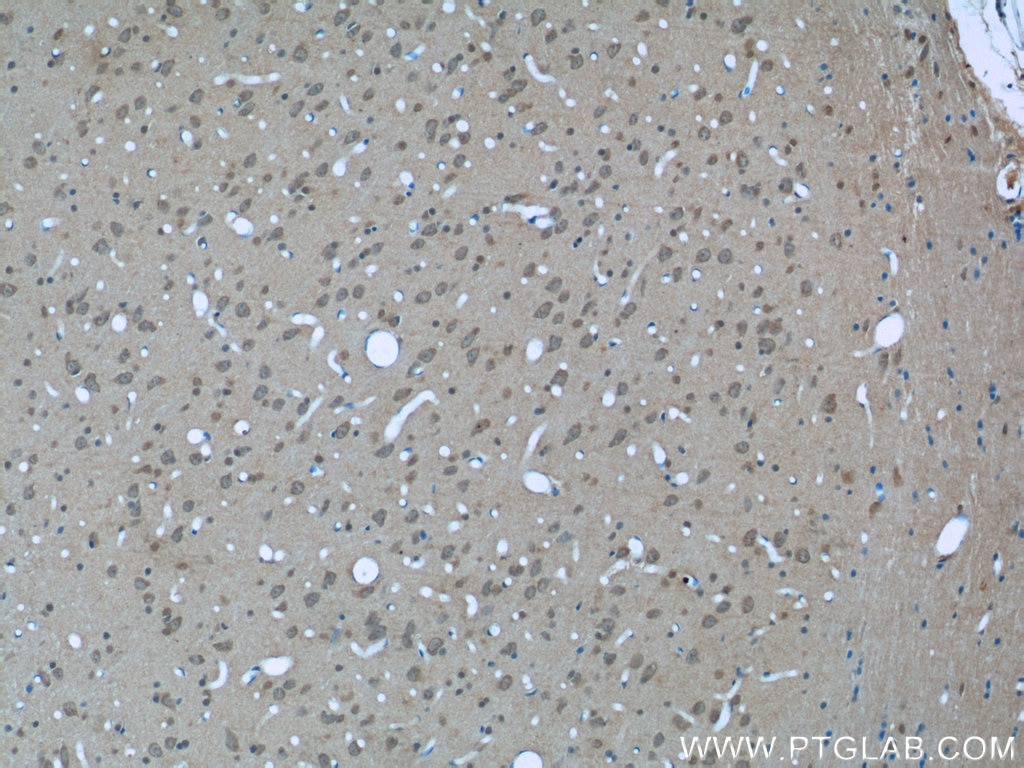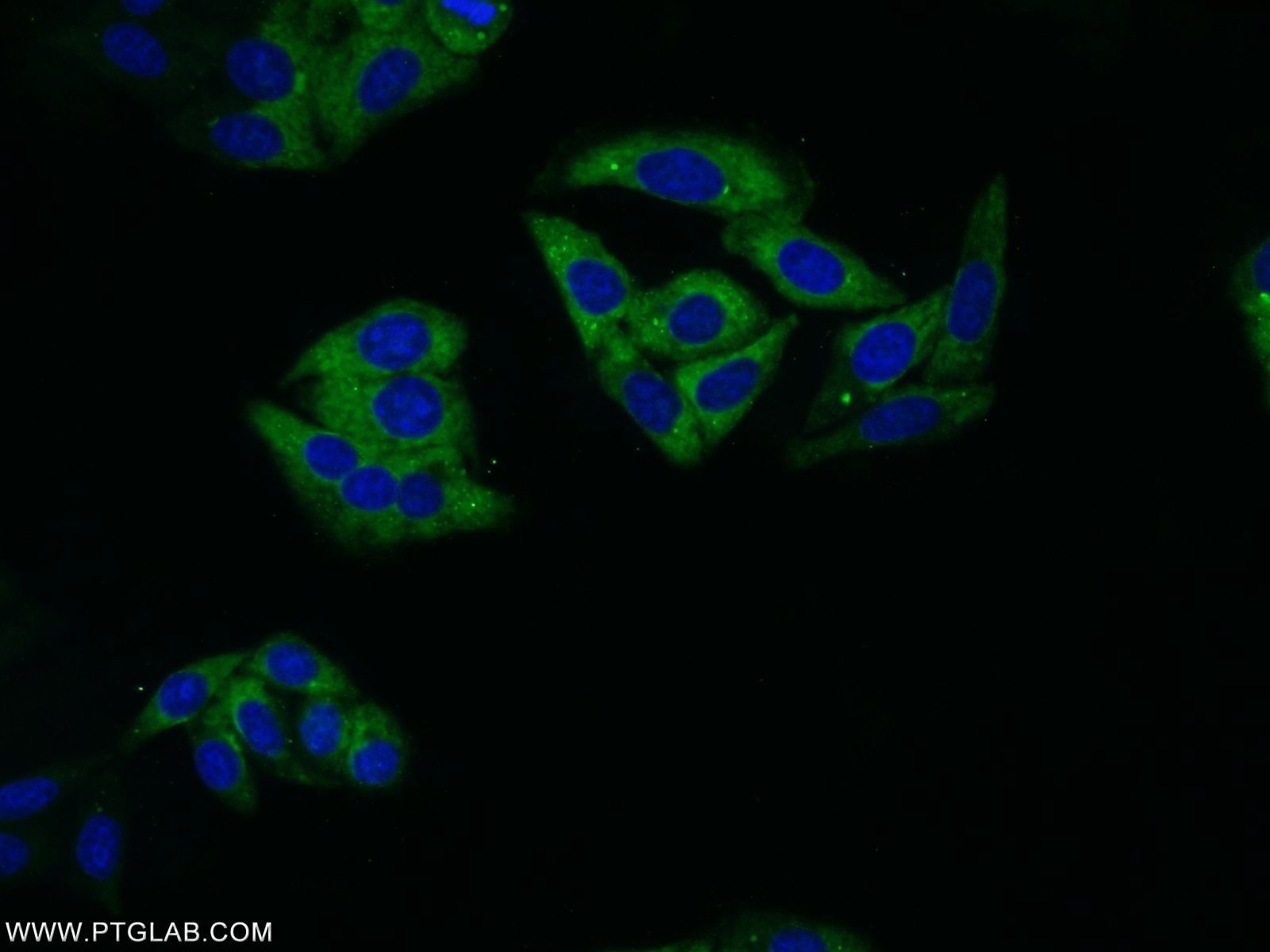Anticorps Monoclonal anti-14-3-3
14-3-3 Monoclonal Antibody for WB, IHC, IF/ICC, IP, ELISA
Hôte / Isotype
Mouse / IgG1
Réactivité testée
Humain, porc, rat, souris
Applications
WB, IHC, IF/ICC, IP, CoIP, ELISA
Conjugaison
Non conjugué
CloneNo.
2E10A3
N° de cat : 66061-1-Ig
Synonymes
Galerie de données de validation
Applications testées
| Résultats positifs en WB | cellules HEK-293, cellules HeLa, cellules HepG2, tissu cérébral de porc, tissu cérébral de rat, tissu cérébral de souris, tissu cérébral humain |
| Résultats positifs en IP | tissu cérébral de rat, |
| Résultats positifs en IHC | tissu de cancer du poumon humain, tissu cérébral de rat il est suggéré de démasquer l'antigène avec un tampon de TE buffer pH 9.0; (*) À défaut, 'le démasquage de l'antigène peut être 'effectué avec un tampon citrate pH 6,0. |
| Résultats positifs en IF/ICC | cellules HepG2 |
Dilution recommandée
| Application | Dilution |
|---|---|
| Western Blot (WB) | WB : 1:2000-1:20000 |
| Immunoprécipitation (IP) | IP : 0.5-4.0 ug for 1.0-3.0 mg of total protein lysate |
| Immunohistochimie (IHC) | IHC : 1:50-1:500 |
| Immunofluorescence (IF)/ICC | IF/ICC : 1:20-1:200 |
| It is recommended that this reagent should be titrated in each testing system to obtain optimal results. | |
| Sample-dependent, check data in validation data gallery | |
Applications publiées
| WB | See 3 publications below |
| IHC | See 1 publications below |
| IF | See 1 publications below |
| IP | See 1 publications below |
| CoIP | See 1 publications below |
Informations sur le produit
66061-1-Ig cible 14-3-3 dans les applications de WB, IHC, IF/ICC, IP, CoIP, ELISA et montre une réactivité avec des échantillons Humain, porc, rat, souris
| Réactivité | Humain, porc, rat, souris |
| Réactivité citée | rat, Humain, porc, souris |
| Hôte / Isotype | Mouse / IgG1 |
| Clonalité | Monoclonal |
| Type | Anticorps |
| Immunogène | 14-3-3 Protéine recombinante Ag6055 |
| Nom complet | tyrosine 3-monooxygenase/tryptophan 5-monooxygenase activation protein, theta polypeptide |
| Masse moléculaire calculée | 28 kDa |
| Poids moléculaire observé | 31 kDa, 28 kDa |
| Numéro d’acquisition GenBank | BC056867 |
| Symbole du gène | 14-3-3 theta |
| Identification du gène (NCBI) | 10971 |
| Conjugaison | Non conjugué |
| Forme | Liquide |
| Méthode de purification | Purification par protéine G |
| Tampon de stockage | PBS with 0.02% sodium azide and 50% glycerol |
| Conditions de stockage | Stocker à -20°C. Stable pendant un an après l'expédition. L'aliquotage n'est pas nécessaire pour le stockage à -20oC Les 20ul contiennent 0,1% de BSA. |
Informations générales
14-3-3 proteins interact with a wide spectrum of proteins and possess diverse functions. Mammals express seven distinct 14-3-3 isoforms (gamma, epsilon, beta, zeta, sigma, theta, tau) that form multiple homo- and hetero- dimmers. 14-3-3 proteins display the highest expression levels in the brain, and have been implicated in several neurodegenerative diseases, including Alzheimer's disease and amyotrophic lateral sclerosis.
Protocole
| Product Specific Protocols | |
|---|---|
| WB protocol for 14-3-3 antibody 66061-1-Ig | Download protocol |
| IHC protocol for 14-3-3 antibody 66061-1-Ig | Download protocol |
| IF protocol for 14-3-3 antibody 66061-1-Ig | Download protocol |
| IP protocol for 14-3-3 antibody 66061-1-Ig | Download protocol |
| Standard Protocols | |
|---|---|
| Click here to view our Standard Protocols |
Publications
| Species | Application | Title |
|---|---|---|
Aging (Albany NY) In vitro and in vivo efficacy of the novel oral proteasome inhibitor NNU546 in multiple myeloma. | ||
Neurosci Res HAP1 interacts with 14-3-3 to regulate epileptic seizure via GABAAR-mediated inhibitory synaptic transmission in pentylenetetrazole rat model. | ||
Clin Nutr Ceramide enhanced the hepatic glucagon response through regulation of CREB activity | ||
J Virol The African swine fever virus MGF360-16R protein functions as a mitochondrial-dependent apoptosis inducer by competing with BAX to bind to the HSP60 protein |
